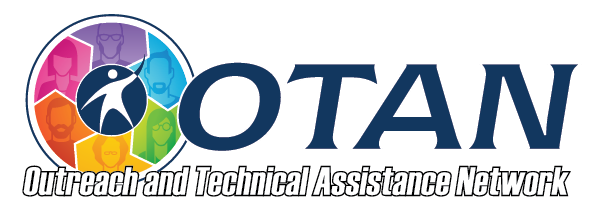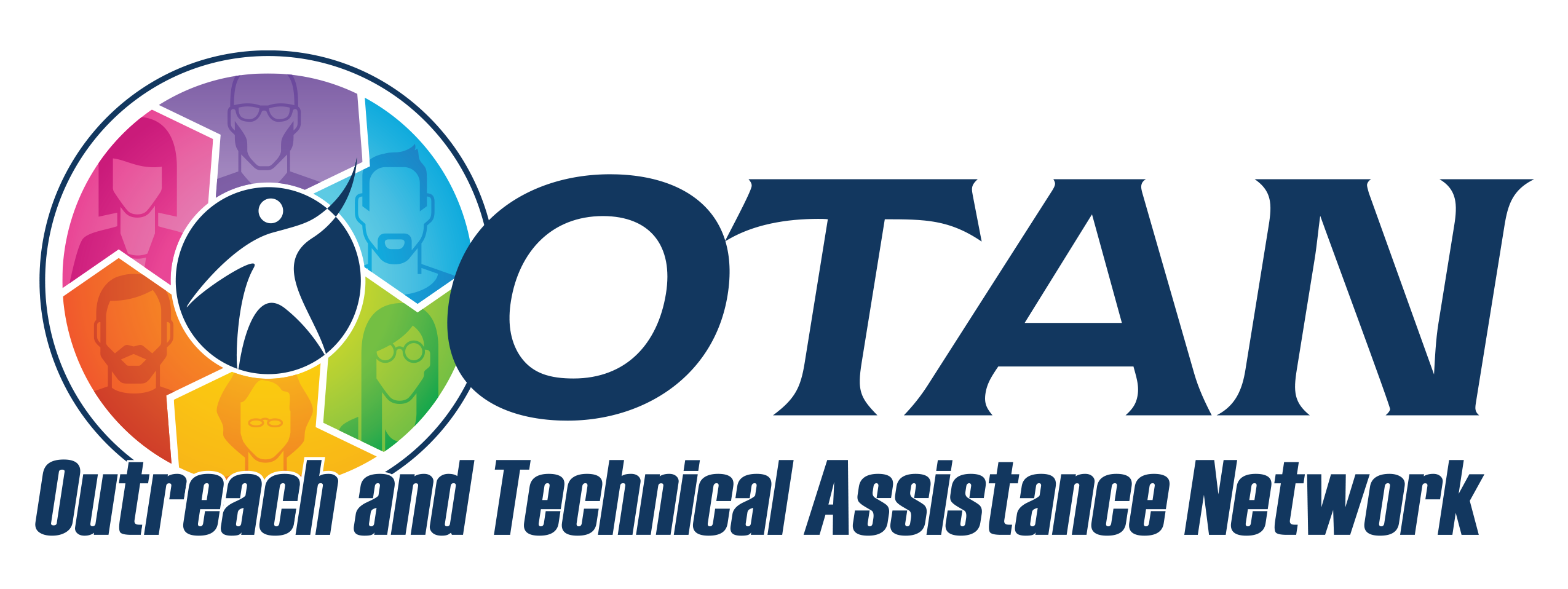Guidance Menu
References
Askov, E. N., Johnston, J., Petty, L. I., & Young, S. J. (2003). Expanding access to adult literacy with online distance education. NCSALL. https://files.eric.ed.gov/fulltext/ED474704.pdf
Belzer, A., Leon, T., Patterson, M., Rhodes, C., Salas-Isnardi, F., Vanek, J., Webb, C., Willson-Toso, B. (2020). COVID-19 rapid response report from the field. ProLiteracy & World Education. https://www.literacynewyork.org/documents/Covid-19/COVID-19-Report.pdf
Benson, A. D. (2007). An exploratory study of online postsecondary education for low income working adults: A view from education support programs. The Journal of Negro Education, 17-30. https://www.jstor.org/stable/40026327
Benson, A. D., Johnson, S. D., Duncan, J., Shinkareva, O. N., Taylor, G. D., Treat, T. (2008). Community college participation in distance learning for career and technical education. Community College Journal of Research and Practice, 32(9), 665-687. https://doi.org/10.1080/10668920600859848
Bin Mubayrik, H. F. (2020). New trends in formative-summative evaluations for adult education. Sage Open, 10(3), 1-13. https://doi.org/10.1177/2158244020941006
Blondy, L. C. (2007). Evaluation and application of andragogical assumptions to the adult online learning environment. Journal of Interactive Online Learning, 6(2), 116-130. https://www.ncolr.org/jiol/issues/pdf/6.2.3.pdf
Cercone, K. (2008). Characteristics of adult learners with implications for online learning design. AACE Journal, 16(2), 137-159. https://www.learntechlib.org/primary/p/24286/
Chametzky, B. (2018). The interconnectedness of learning: How andragogy can improve the online learning experience. American Journal of Educational Science, 4(4), 93-99. http://www.aiscience.org/journal/paperInfo/ajes?paperId=4115
Digital US Coalition. (2020). Building a digitally resilient workforce: Creating on-ramps to opportunity. https://digitalus.org/download/
Dimou, H. & Kameas, A. (2016). Quality assurance model for digital adult education materials. Quality Assurance in Education, 24(4), 562-585. https://doi.org/10.1108/QAE-03-2015-0008
Dracopoulos, E. & Pichette, F. (2011). Second language writing anxiety, computer anxiety, and performance in a classroom versus a web-based environment. Studies in Second Language Learning and Teaching, 1(1), 101-117. https://doi.org/10.14746/ssllt.2011.1.1.6
EdTech Center @ World Education. (2020). What we learned: Adult education's response to emergency remote teaching and learning. https://edtech.worlded.org/wp-content/uploads/2020/07/WEI-for-BMGF-Adult-Ed-COVID19-Response-8.2020.pdf
Falowo, R. O. (2007). Factors impeding implementation of web-based distance learning. AACE Journal 15(3), 315-338. https://www.learntechlib.org/primary/p/21710/
Finkelstein, J., Knight, E., & Manning, S. (2013). The potential and value of using digital badges for adult learners. American Institutes for Research. https://lincs.ed.gov/publications/pdf/AIR_Digital_Badge_Report_508.pdf
Halpern, R. & Tucker, C. (2015). Leveraging adult learning theory with online tutorials. Reference Services Review, 43(1), 112-124. http://dx.doi.org/10.1108/RSR-10-2014-0042
Housel, D. A. & Oranjian, N. (2021). A case study of the use of Newsela PRO among adult, emergent bi/multilingual learners in a precollege program. Adult Learning, 32(2), 59-69. https://doi.org/10.1177/1045159520959474
Johnston, J., Hart, S., Long, D., Vanek, J. (2015). New models for distance classes in adult education. Project IDEAL Research Report Series. https://edtech.worlded.org/wp-content/uploads/2017/07/NewModelsForAdultDistanceEd.pdf
Knowles, M. S., Holton, E. F., Swanson, R. A., Robinson, P. A. (2020). The adult learner: The definitive classic in adult education and human resource development. Routledge. https://doi.org/10.4324/9780429299612
Long, G. L., Vignare, K., Rappold, R. P., & Mallory, J. (2007). Access to communication for deaf, hard-of-hearing and ESL students in blended learning courses. International Review of Research in Open and Distributed Learning, 8(3), 1-13. https://www.irrodl.org/index.php/irrodl/article/view/423
Lotas, S. V. (2021). The COVID-19 pandemic from an adult literacy practitioner-scholar perspective. Adult Literacy Education, 3(2), 50-54. http://doi.org/10.35847/SLotas.3.2.50
Miles, T. (2021). Adult education: A state director's perspective. Adult Literacy Education, 3(2), 44-49. https://files.eric.ed.gov/fulltext/EJ1304813.pdf
Mortrude, J. (2021). Adult education: Facing the future. Adult Literacy Education, 3(2), 55-60. http://doi.org/10.35847/JMortrude.3.2.55
Murphy, R., Bienkowski, M., Bhanot, R., Wang, S., Wetzel, T., House, A., Leones, T., Van Brunt, J. (2017). Evaluating digital learning for adult basic literacy and numeracy. SRI International. https://www.sri.com/publication/education-learning-pubs/digital-learning-pubs/evaluating-digital-learning-for-adult-basic-literacy-and-numeracy/
Olesen-Tracey, K. (2010). Leading online learning initiatives in adult education. Journal of Adult Education, 39(2). https://files.eric.ed.gov/fulltext/EJ930245.pdf
Porter, D. (2004). California's experience with distance education for adult basic learners. Adult Basic Education, 14(3), 135-152. https://www.learntechlib.org/p/98908/
Prins, E., Drayton, B., Gungor, R., & Kassab, C. (2011). GED preparation through distance learning in rural Pennsylvania. Center for Rural Pennsylvania. https://files.eric.ed.gov/fulltext/ED540869.pdf
Rapchak, M. & Behary, R. (2013). Digital immigrants, digital learning: Reaching adults through information literacy instruction online. Journal of Library & Information Services in Distance Learning, 7(4), 349-359. https://doi.org/10.1080/1533290X.2013.842950
Rosen, D. J. & Vanek, J. (2020). The what, why, who, and how of blended learning for adult basic skills learners. New Readers Press. https://www.newreaderspress.com/blended-learning-guide
Roumell, E. A. (2021). Where do we go now? Adult and workforce education policy post-2020. Adult Literacy Education, 3(1), 75-82. http://doi.org/10.35847/ERoumell.3.1.75
Schultz, R. B. (2012). A critical examination of the teaching methodologies pertaining to distance learning in geographic education: Andragogy in an adult online certificate program. Review of International Geographical Education Online, 2(1), 45-60. https://files.eric.ed.gov/fulltext/EJ1158092.pdf
Semmar, Y. (2006). Distance learners and academic achievement: The roles of self-efficacy, self-regulation and motivation. Journal of Adult and Continuing Education, 12(2), 244-256. https://doi.org/10.7227%2FJACE.12.2.9
Sharma, P., Vanek, J., Ascher Webber, A. (2019). Leveraging technology to increase economic opportunity for adults: Field testing tools that break barriers to learning and employment. World Education. https://edtech.worlded.org/wp-content/uploads/2019/10/ttale-report.pdf
Silver-Pacuilla, H. (2008). Investigating the language and literacy skills required for independent reading. National Institute for Literacy. https://lincs.ed.gov/publications/pdf/NIFLOnlineLearningReport.pdf
Smythe, S. & Breshears, S. (2017). Complicating access: Digital inequality and adult learning in a public access computing space. Canadian Journal for the Study of Adult Education, 29(1), 67-81. https://cjsae.library.dal.ca/index.php/cjsae/article/view/5362
Turner, P. E., Johnston, E., Kebritchi, M., Evans, S., & Heflich, D. A. (2018). Influence of online computer games on the academic achievement of nontraditional undergraduate students. Cogent Education, 5(1), 1-16. https://doi.org/10.1080/2331186X.2018.1437671
Williams, L. S. (2017). The managed heart: Adult learners and emotional presence online. The Journal of Continuing Higher Education, 65(2), 124-131. http://dx.doi.org/10.1080/07377363.2017.1320204
Zirkle, C. (2003). Distance education and career and technical education: A review of the research literature. Journal of Vocational Education Research, 28(2), 161-181. https://doi.org/10.5328/jver28.2.161

